Kolibri – the Smallest Shooting Pistol in History
In the late 19th and early 20th century, science and technology developed and actively improved. This technological advance also included firearms. The invention of smokeless gunpowder reduced the size of ammunition without reducing their capacity. It made weapons more compact. Attempts to find the market demand for small arms led to the creation of exciting and progressive systems. Weapons became more practical, convenient, and easy to use. In pursuing fashion to have a compact gun, armorers sometimes designed funny shooting devices. One of these controversial miniature models is the «Kolibri.»
Table of Contents
The Miniature Pistol «Kolibri»: In the Beginning
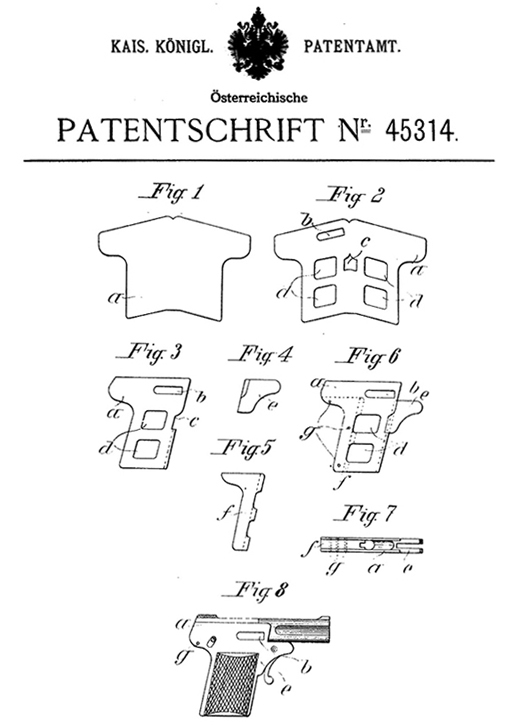
A Second «Kolibri» Miniature Model
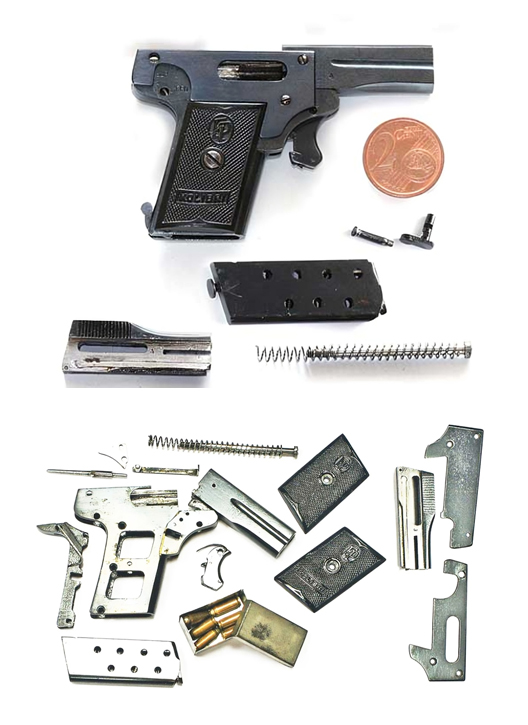
Gun Details and Dismantling Operations
All parts of the gun are assembled by screws. For this reason, dismantling is not a problem. Still, at the same time, it is quite a laborious occupation because of small screws, miniature parts, and miserable gaps between interacting parts of the weapons. If you tighten the mounting screws a little more complicated than it should, the pistol’s automatic may start to falter.
Dismantling includes the following operations: detach a magazine (it should be noted that its latch is convenient); remove the screw that fixes the shutter in the frame; remove the screw which passes through the return spring in the barrel unit; extract the shutter, moving it back along the frame grooves, remove the recoil spring and the guide rod; remove the screw and detach the side plates and the cheeks of the handle. Then, extract the rear part from the frame (after unscrewing the fixing screws), extract parts of the trigger mechanism, and detach a barrel unit. During assembly (the same actions are in reverse order), you should carefully adjust the shutter and the frame.
Some arm details (receivers, shutters, triggers) have markings in the form of stamps that indicate the year of manufacture and serial number.
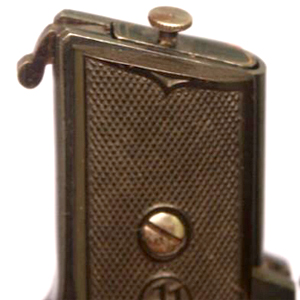
Cheek-pieces have a knurled surface, and they are marked with the abbreviation «FP» in the top part and the inscription «KOLIBRI» at the bottom. Some guns have the «KREMSa \ D» instead of the inscription «KOLIBRI.»
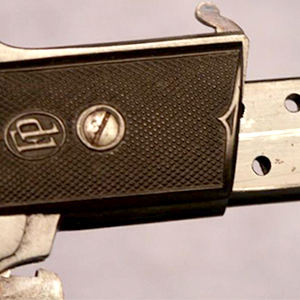
A box-type magazine is detachable and has a capacity of 6 rounds. At the bottom of the magazine is a rod with a disc tip for convenient extraction. This gun has a simple striker-type trigger mechanism.
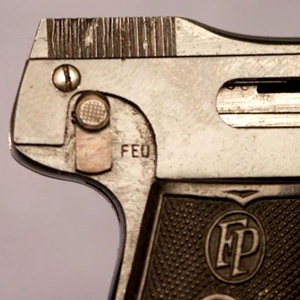
When you set the hammer cocked, its tip protrudes from the rear of the shutter and performs a signal pin function. The flag-type fuse is located on the right side of the frame, and when the fuse is on, it blocks the trigger mechanism.
Expensive Kolibri Pistol Varieties
Expensive pistol varieties had pearl handles, were engraved, and had a gilded finish on their metal parts.
The «Kolibri» pistol was not widely used, and in the mid-thirties of the 20th century, its release was discontinued. About 1000 copies were produced in total. The reasons that influenced the demand were stiff competition in the civilian weapons market and the disadvantages of this model. The main disadvantages include low shot power due to weak ammunition and the lack of rifling on the barrel. The gun allows a bullet caliber of 2.7 mm to speed up to 200 m/s, which is barely enough to dip the bullet in dry pine at a depth of 40 mm. The presence of small screws and parts did not contribute to the ease of using this gun. Its owners complained about the inconvenience connected with aiming and charging the magazine.
In the 20th century, this miniature pistol attracted the attention of people who like unconventional firearms. In our time, the gun was trendy among collectors, as it was the smallest of the mass-produced automatic pistols.
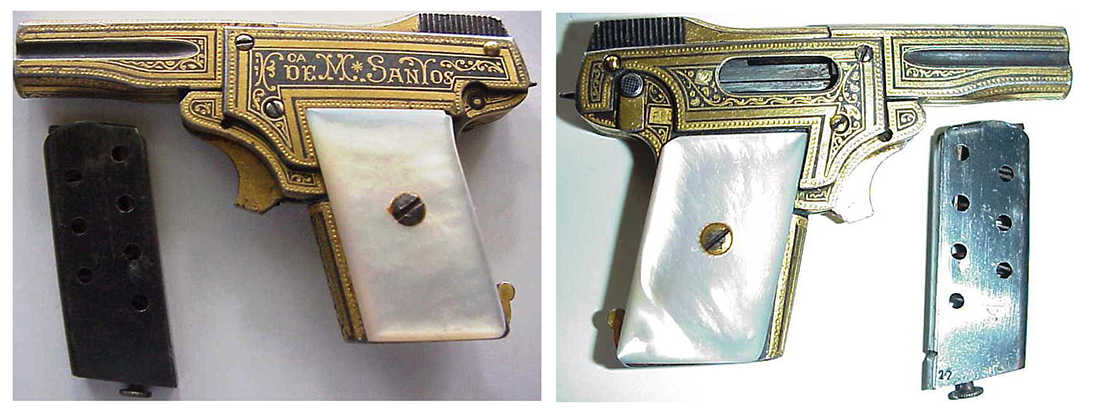
New Challenge from Miniature Pistol Producers
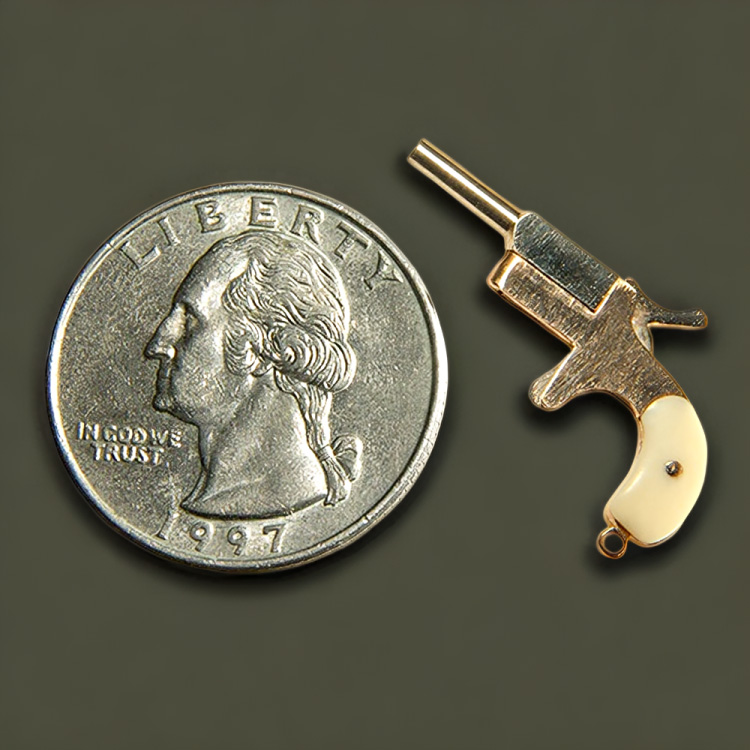
The story you read above does not mean that no other similar arms of an even smaller size can be charged and fire real bullets. You can find many examples of private masters’ works. There are Tula gunsmiths’ arms with the caliber of 1 mm, German mini-guns, and some models from US manufacturers. Of course, they are not released in bulk: such things are intended only for connoisseurs and collectors, and their shot power is usually not enough even to damage the palm of the hand, shooting at close range. Combining small size and functionality is a complicated technical problem. As a rule, something must necessarily be sacrificed. But only sometimes.
The miniature pistol presented on our website combines unprecedented size and excellent shot power. Its length is 25 mm, height is 15 mm, weight – is 2.3 grams. Barrel length –14 mm, caliber – 1 mm. The central ignition cartridges, which are used to charge it, weigh only 0.04 grams. They include a unique explosive mixture and bullets made of hardened steel, which save their shape after hitting any surface. The shot of these miniature arms is powerful enough to pierce through a tin plate (for example, the side of a can).
This model is created by mechanics and jewelers. It is a replica of the “Derringer” gun on a scale of 1:6. Besides the fact that it is the smallest acting pistol in the world, it is also a precious piece of jewelry (so it can adorn not only a collection of miniature weapons but also its owner directly). This can be worn as a pendant and looks stylish and unusual. The pistol is made of two types of gold: white and red. Red gold is used in its body, and white gold is used in the barrel and internal mechanism. This separation results from aesthetic goals, and white gold is more complex as it has palladium in its structure, which allows it to bear more weight.
The handle decoration is also made of an unusual, precious material: mammoth bone. This pistol has a little antiquity in it. At this moment, only a few copies of this model have been released. And if you want to complete your collection with this exhibit, you can become one of the first collectors who have it! You can contact us in any convenient way to learn more about the gun. And if you are ready to place an order, you can do so here.
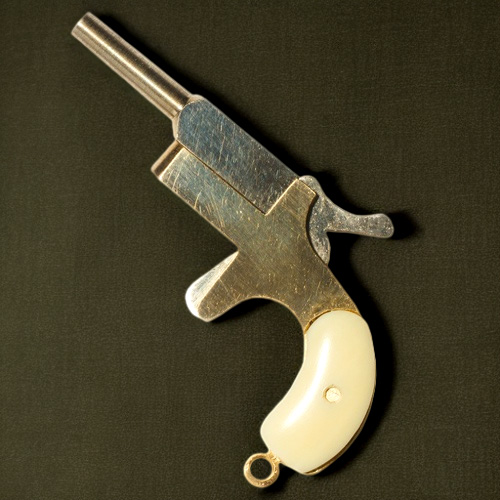
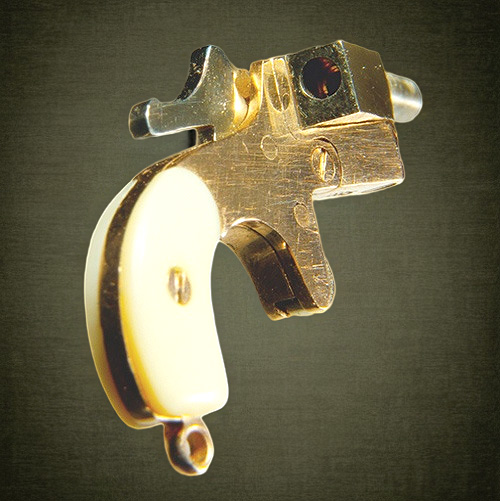
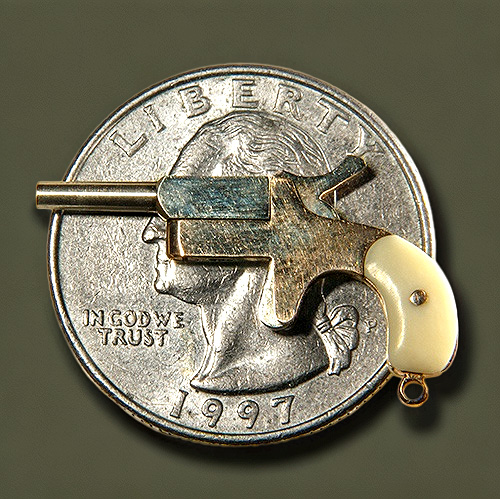
About the Author
My name is Olha Polah, and I have been working in miniature weapons production since 2015. I started the mini firearms brand and have been running the brand’s Instagram page since 2016. The brand’s miniatures are popular worldwide, with fans in 25+ countries. I became the sole owner of the brand in 2018 and created a comprehensive line of miniatures. More than 60 models of miniature weapons from various historical periods have been created. In November 2023, I was interviewed by Robert Dunn for the GunTech magazine, where I talked about the hardships I had to endure in my business. I also run a newsletter for the brand’s customers, which has evolved into a full-fledged magazine with in-depth articles published on the wpolah.com.

My mission is to make people’s lives more joyful by sharing interesting facts about miniature weapons and inspiring everyone to express themselves.
